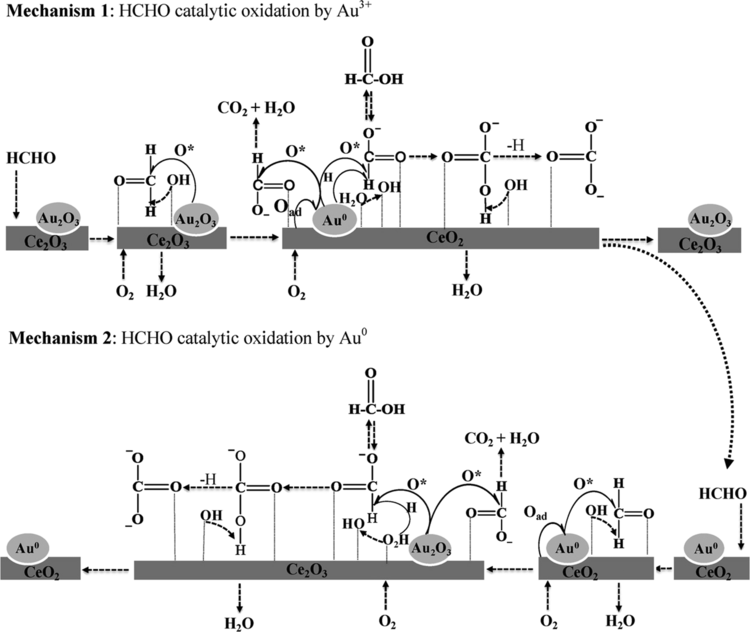 | ||
Catalytic oxidation of acetone by copper
Catalytic oxidation are processes that oxidize compounds using catalysts. Common applications involve oxidation of organic compounds by the oxygen in air. Such processes are conducted on a large scale for the remediation of pollutants, production of valuable chemicals, and the production of energy.
Contents
- Catalytic oxidation of acetone by copper
- Catalytic oxidation of ammonia
- Examples
- Applied catalysis
- Fine chemicals
- Biological catalysis
- Fuel cells etc
- References
An illustrative catalytic oxidation is the conversion of methanol to the more valuable compound formaldehyde using oxygen in air:
2 CH3OH + O2 → 2CH2O + 2 H2OThis conversion is very slow in the absence of catalysts. Typical oxidation catalysts are metal oxides and metal carboxylates.
Catalytic oxidation of ammonia
Examples
Industrially important examples include both inorganic and organic substrates.
Applied catalysis
Oxidation catalysis is conducted by both heterogeneous catalysis and homogeneous catalysis. In the heterogeneous processes, gaseous substrate and oxygen (or air) are passed over solid catalysts. Typical catalysts are platinum, and redox-active oxides of iron, vanadium, and molybdenum. In many cases, catalysts are modified with a host of additives or promoters that enhance rates or selectivities.
Important homogeneous catalysts for the oxidation of organic compounds are carboxylates of cobalt, iron, and manganese. To confer good solubility in the organic solvent, these catalysts are often derived from naphthenic acids and ethylhexanoic acid, which are highly lipophilic. These catalysts initiate radical chain reactions, autoxidation that produce organic radicals that combine with oxygen to give hydroperoxide intermediates. Generally the selectivity of oxidation is determined by bond energies. For example, benzylic C-H bonds are replaced by oxygen faster than aromatic C-H bonds.
Fine chemicals
Many selective oxidation catalysts have been developed for producing fine chemicals of pharmaceutical or academic interest. Nobel Prize–winning examples are the Sharpless epoxidation and the Sharpless dihydroxylation.
Biological catalysis
Catalytic oxidations are common in biology, especially since aerobic life subsists on energy obtained by oxidation of organic compounds by air. In contrast to the industrial processes, which are optimized for producing chemical compounds, energy-producing biological oxidations are optimized to produce energy. Many metalloenzymes mediate these reactions.
Fuel cells, etc
Fuel cells rely on oxidation of organic compounds (or hydrogen) using catalysts. Catalytic heaters generate flameless heat from a supply of combustible fuel and oxygen from air as oxidant.
